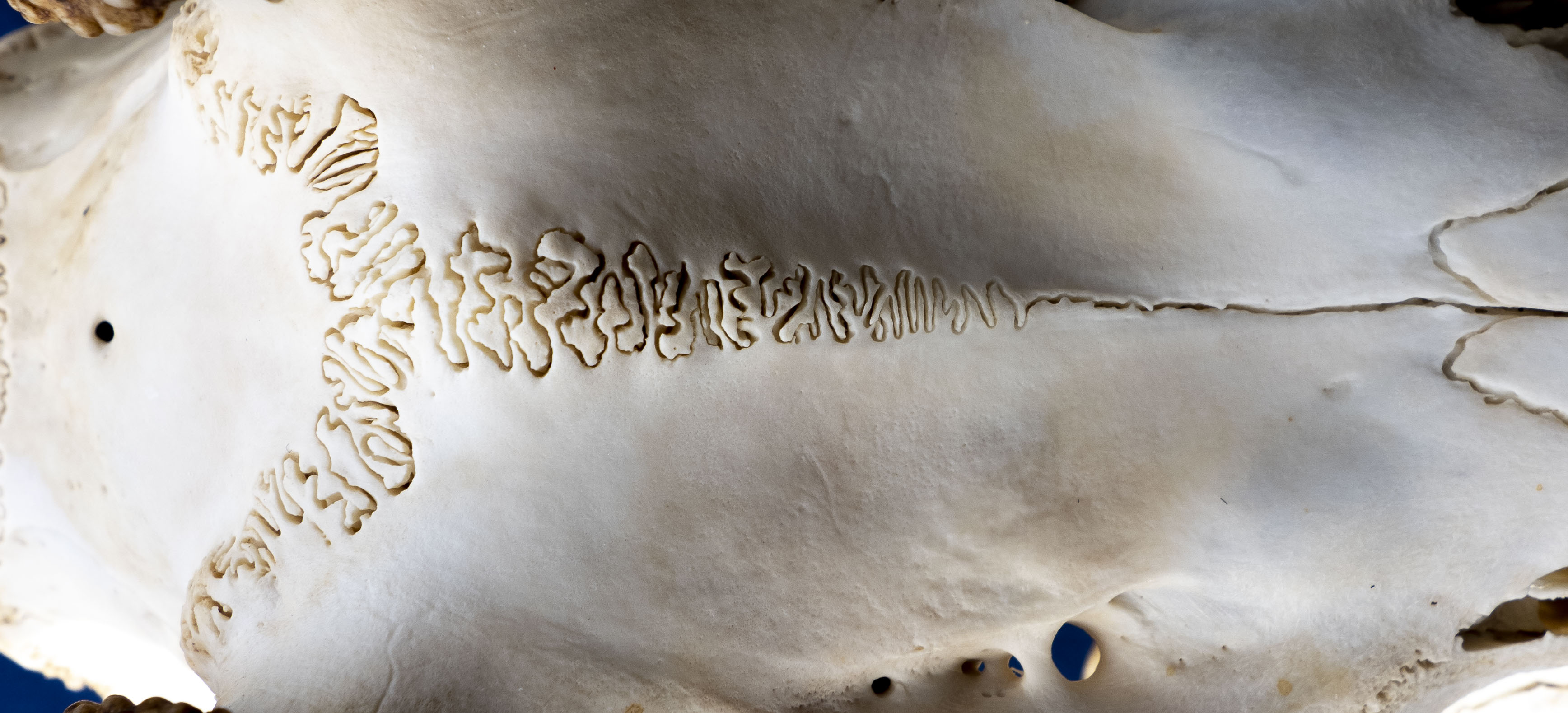Finding beauty in nature isn’t hard to come by. Looking out my window right now I could name a hundred things – the deep green and eye-popping yellow of sprouting daffodils; moss patterns on the drab winter landscape; March snows blanketing naked branches.
And then there are the critters – the dark red-orange breast of newly arrived robins; the elegant bounds of busy squirrels; and the singing chorus of peepers!
I, of course, am partial to the beauty of white-tailed deer. There is nothing that is not beautiful about them. Their deep brown eyes, graceful step, and fabulous tail. But their beauty is not just skin deep. It goes all the way to the bone.
A few weeks ago, Dr. Brown and I discussed the demise of a yearling buck Duane discovered on Cumberland Island. About how a common bacterium goes a little crazy when it finds an open door. It doesn’t mean any harm but, like a bull in a China shop, nothing can stop it. We described how it crashes right into the brain through a most beautiful gate – cranial sutures.
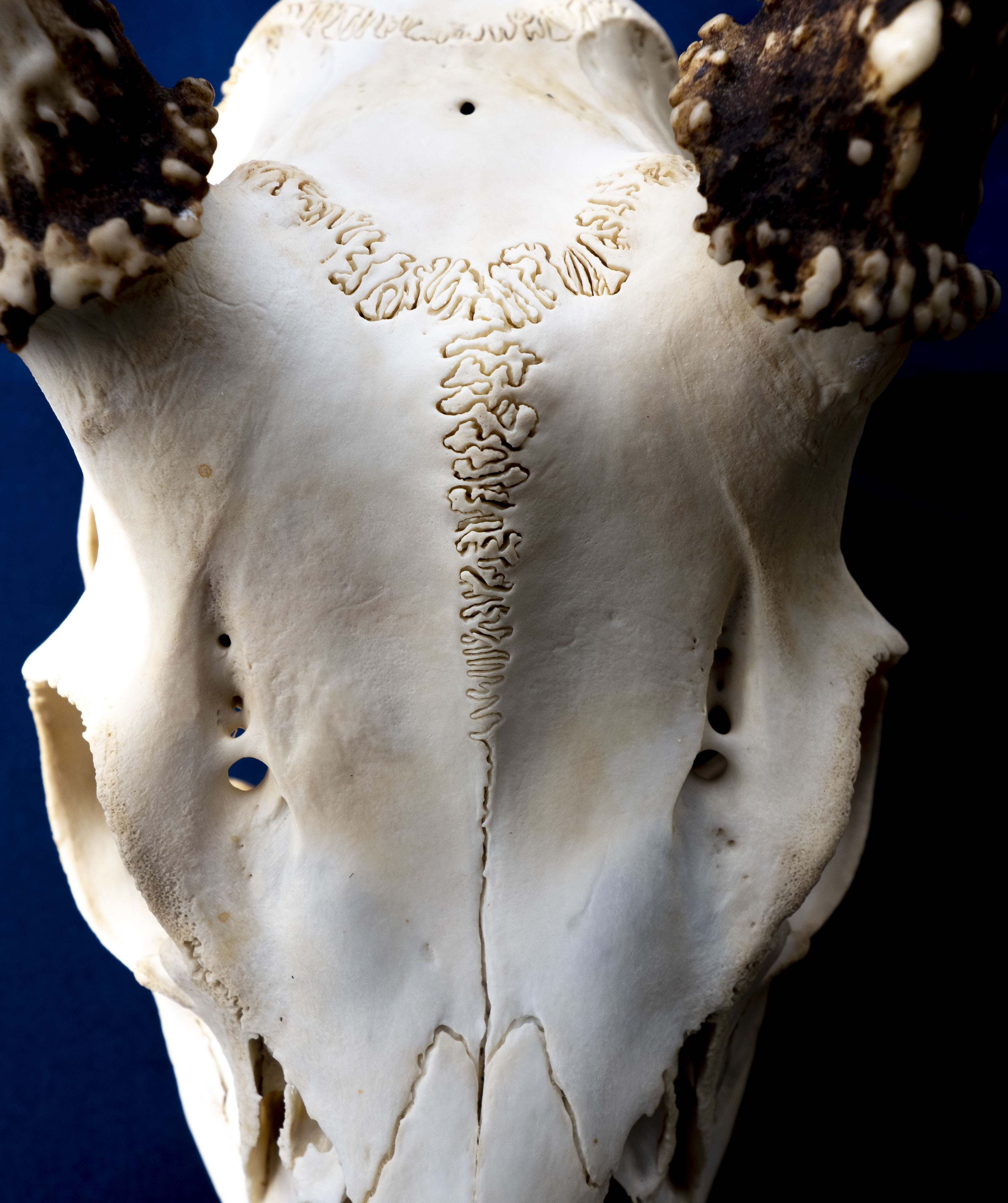
Sutures are places where bones are joined together with fibrous connective tissue. They allow bones to grow and expand. In the case of the skull, sutures are needed to accommodate growing brains. Sutures are unique and can be used to identify individuals. The pattern of cranial suture closure is species specific as well. Which makes sense as brain size and growth rates differ among mammals as well as morphology. I don’t see many deer ripping apart a rabbit; wolves grinding up maple twigs; or groundhogs with bony protrusions from their forehead.
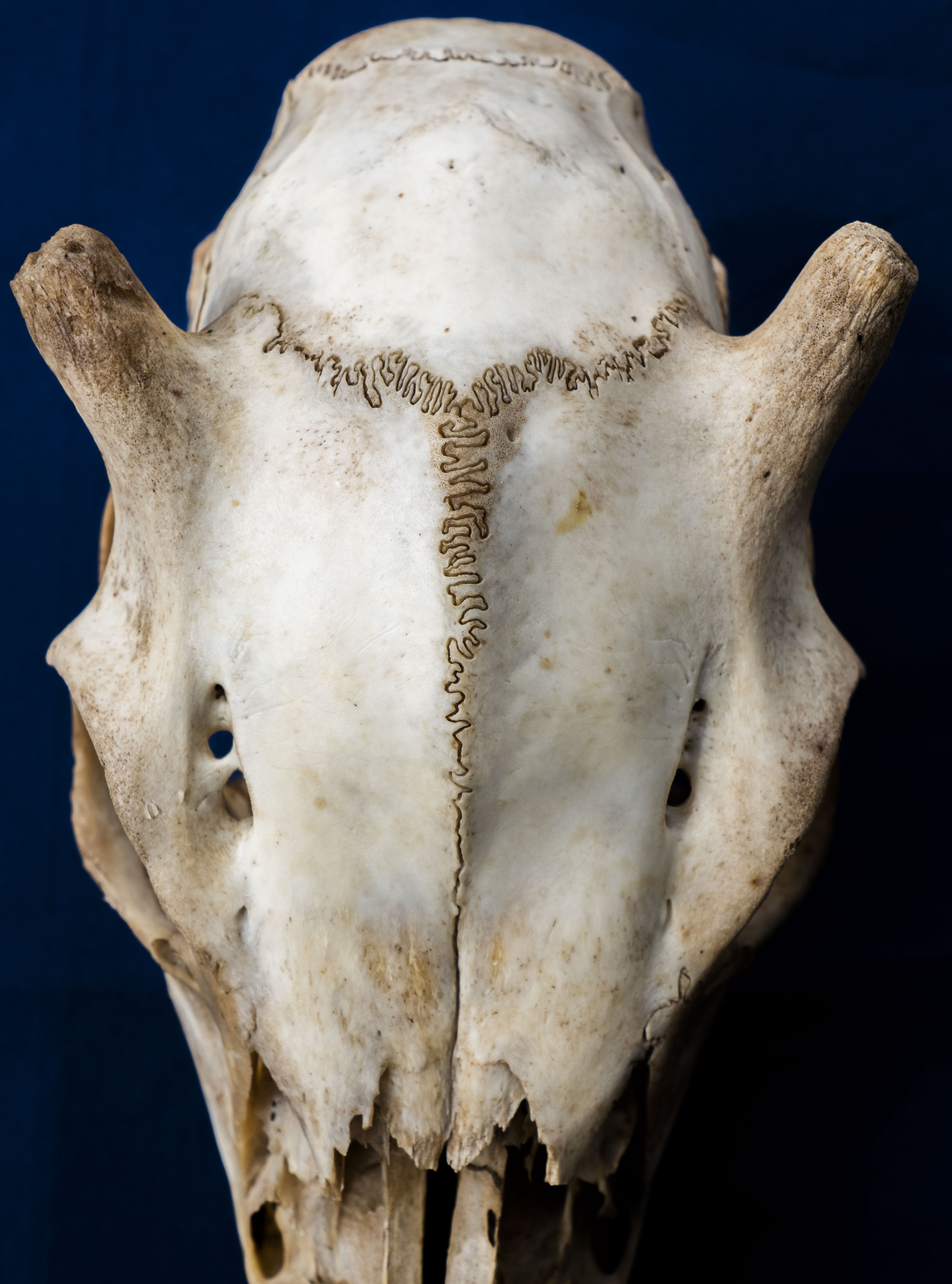
But all deer do not have bony protrusions from their forehead either. Did you know that water deer (Hydropotes inermis) are the only member of the cervid family without antlers? Instead, males possess well-developed canines. Antlers or not, their pattern of cranial suture closure is the same as other cervids.
What about male and female deer? Obviously, there are sex differences whether its overgrown canines or bony protrusions. The skull and those sutures are under more stress carrying and using antlers. Cranial size in male deer continues to increase in adults. Those sutures need to accommodate that. If suture closure patterns are the same for a species and sutures themselves are unique, maybe their complexity varies among the dimorphic sexes.
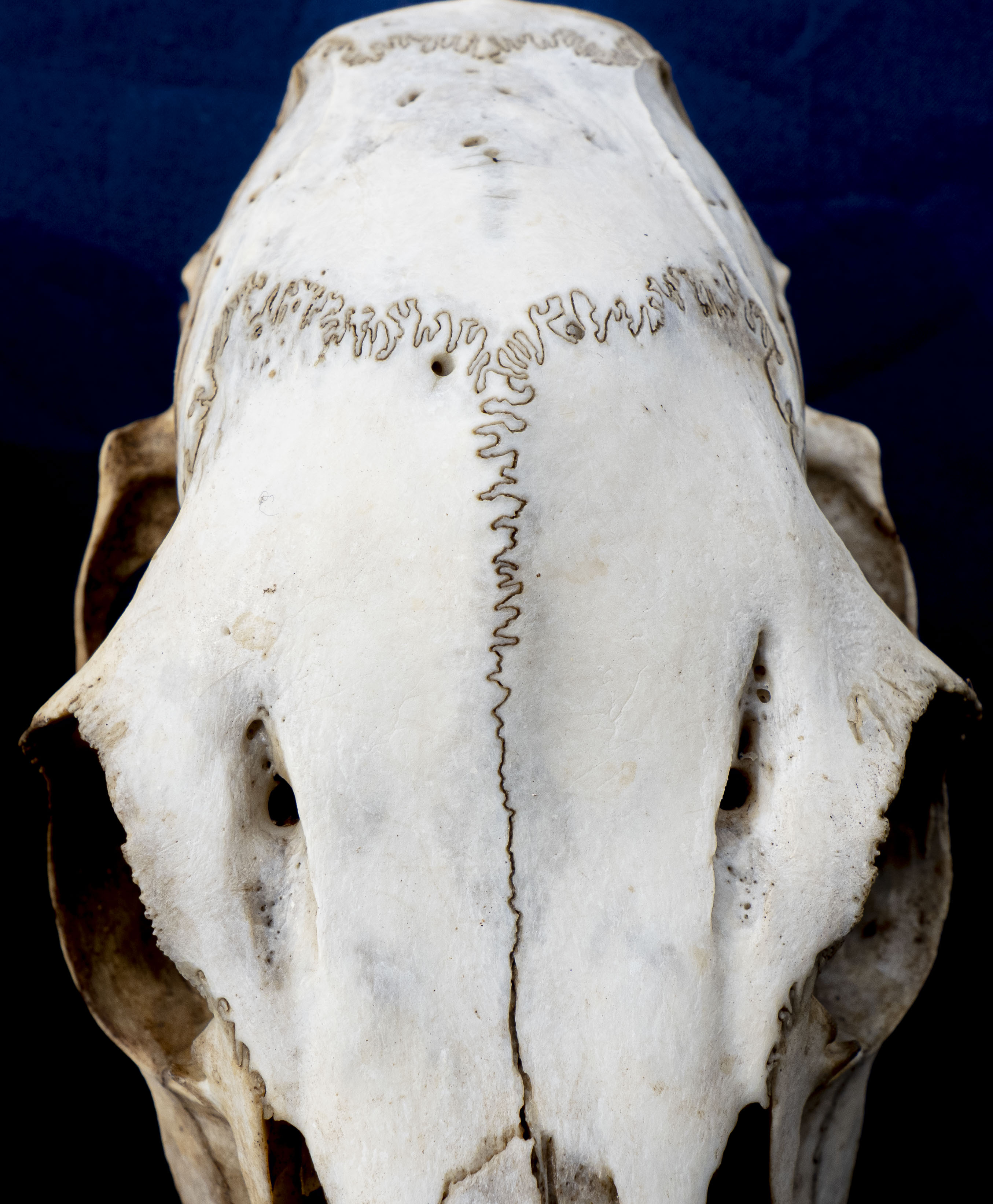
Fear not – someone actually measured suture complexity in white-tailed deer using 2 different methods. They found no significant increase in suture complexity with age in adults and no significant differences in suture complexity between males and females. Go figure!
You can use this cool, useless knowledge to “Wow” friends and neighbors at a spring soccer or softball game or maybe at your next cookout.
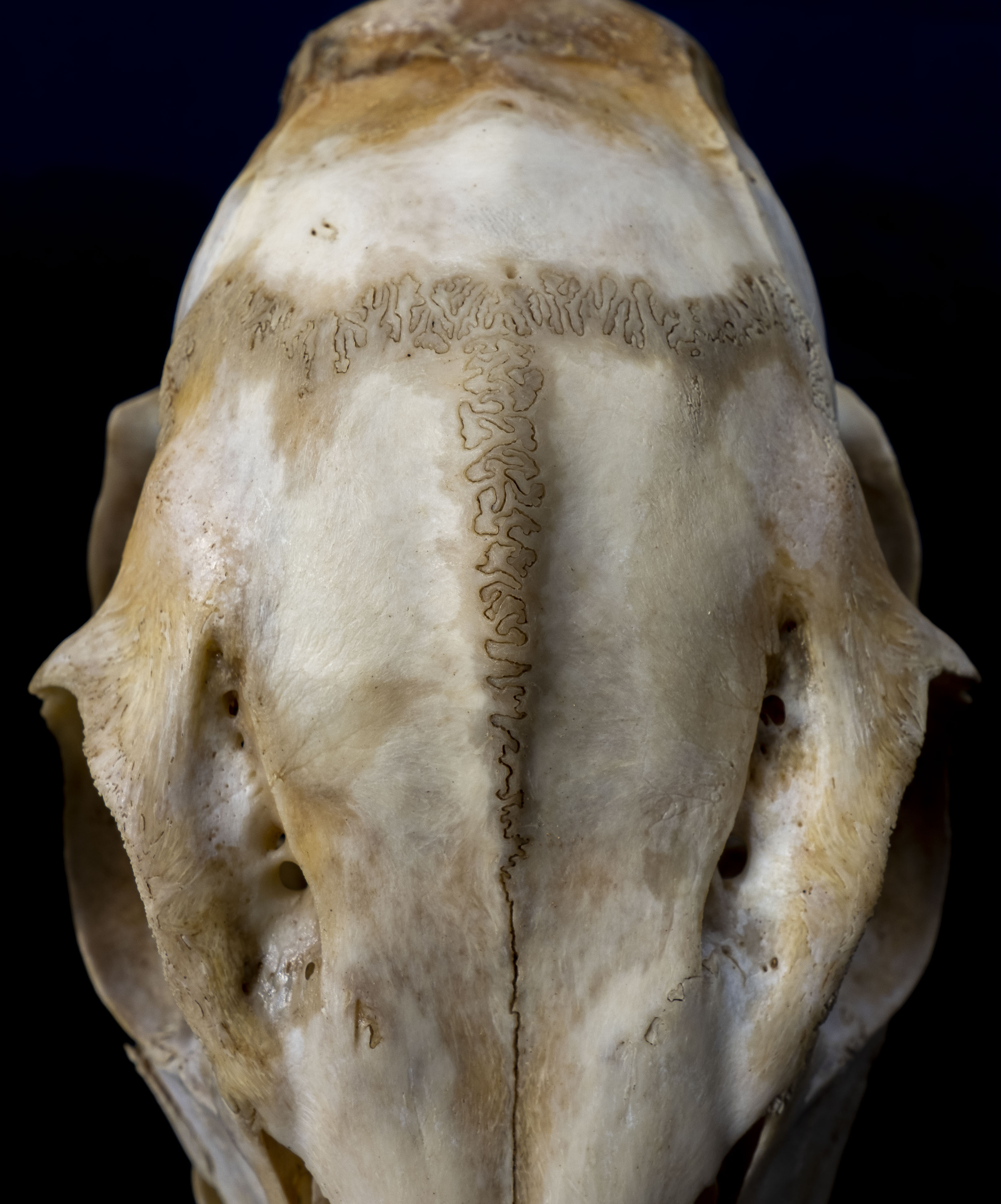
But the most wonderful thing about cranial sutures, in my opinion, is their beauty. Intricate, delicate, unique – a work of art inside every deer.
-Jeannine Fleegle
Wildlife Biologist
PA Game Commission
